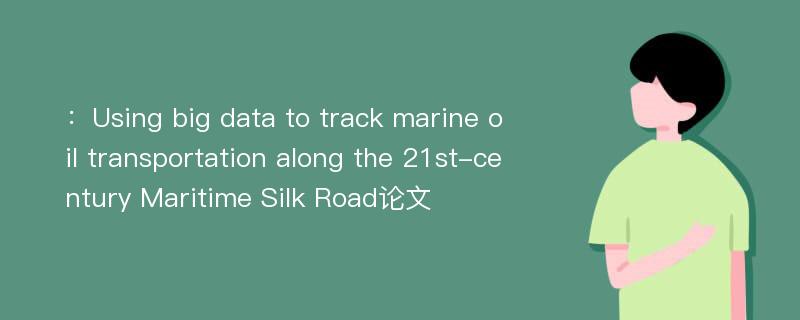
本文主要研究内容
作者(2019)在《Using big data to track marine oil transportation along the 21st-century Maritime Silk Road》一文中研究指出:China’s designation of the "21 st-century Maritime Silk Road"(MSR) region is of extraordinary significance to its maritime rights, transportation security, and socio-economic development. We developed a technical framework allowing the use of "big data" derived from the Automatic Identification System(AIS, an automatic ship-tracking network) for two purposes: the accurate mapping of oil tanker trajectories and the creation of heat maps showing the relative use of oil tanker routes and marine shipping chokepoints. We then applied these methods to 1.5 billion AIS records collected within the MSR in 2014 to statistically identify and analyze busy routes, areas, and chokepoints in this strategic region. Our results demonstrate that the proposed framework can provide an effective analysis of oil movements based on large-scale AIS datasets, helping researchers and policy makers better understand the footprint and strategic implications of maritime oil transportation in the MSR region.
Abstract
China’s designation of the "21 st-century Maritime Silk Road"(MSR) region is of extraordinary significance to its maritime rights, transportation security, and socio-economic development. We developed a technical framework allowing the use of "big data" derived from the Automatic Identification System(AIS, an automatic ship-tracking network) for two purposes: the accurate mapping of oil tanker trajectories and the creation of heat maps showing the relative use of oil tanker routes and marine shipping chokepoints. We then applied these methods to 1.5 billion AIS records collected within the MSR in 2014 to statistically identify and analyze busy routes, areas, and chokepoints in this strategic region. Our results demonstrate that the proposed framework can provide an effective analysis of oil movements based on large-scale AIS datasets, helping researchers and policy makers better understand the footprint and strategic implications of maritime oil transportation in the MSR region.
论文参考文献
论文详细介绍
论文作者分别是来自Science China(Technological Sciences)的,发表于刊物Science China(Technological Sciences)2019年04期论文,是一篇关于,Science China(Technological Sciences)2019年04期论文的文章。本文可供学术参考使用,各位学者可以免费参考阅读下载,文章观点不代表本站观点,资料来自Science China(Technological Sciences)2019年04期论文网站,若本站收录的文献无意侵犯了您的著作版权,请联系我们删除。
